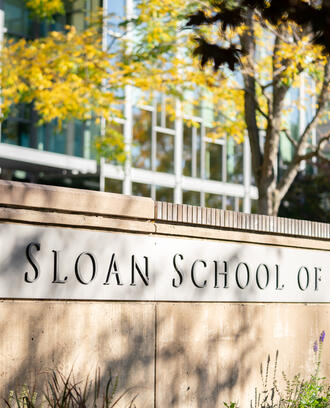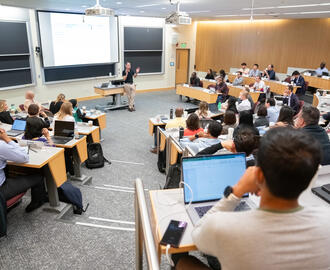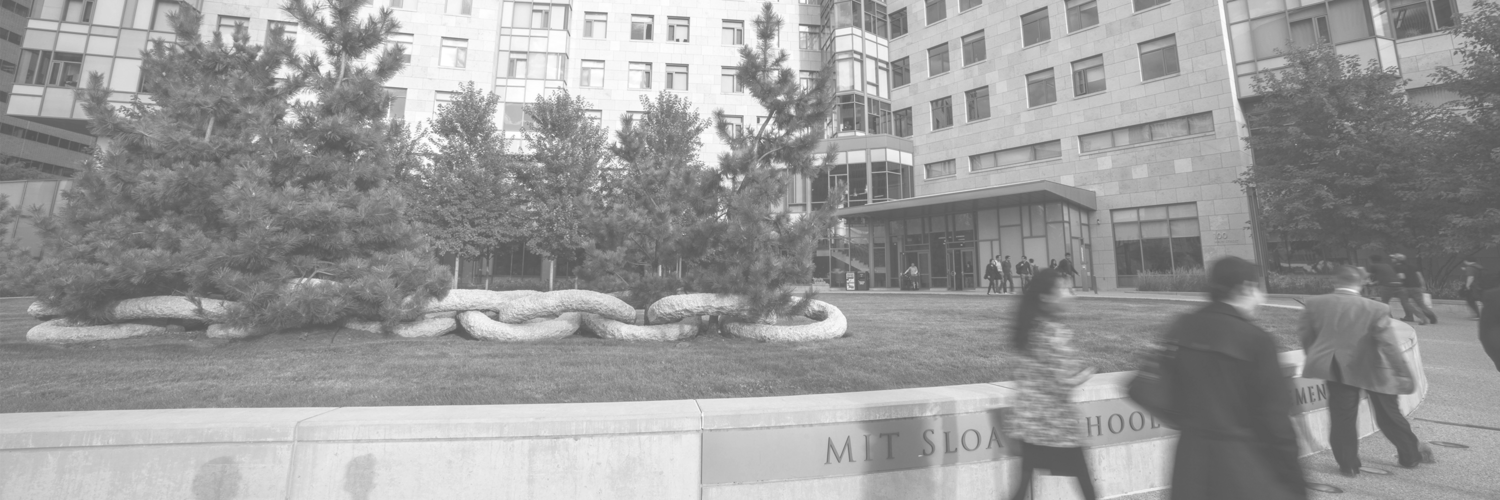Melissa Roberts Chapman, EMBA ‘22, has dedicated her career to fostering entrepreneurship and economic development, particularly in the Midwest. As the President of the KC BioHub and Kansas City’s Regional Innovation Officer, she works to build an equitable biomanufacturing and biologics innovation ecosystem, leveraging science and entrepreneurship to drive economic growth.
What motivated you to pursue an Executive MBA, and why did you choose MIT Sloan?
Melissa Roberts Chapman, EMBA '22
I had been considering an MBA for a while, but it wasn’t an obvious decision. My background was in policy, economic development, and entrepreneurship. I wasn’t working in a traditional corporate setting where an MBA felt like the next logical step. But as I worked with investors and policymakers, I found myself in rooms with people who had more financial expertise than I did. I wanted to close that gap.
I first encountered the MIT EMBA through an on-campus event, and I was so impressed with the discussions and curriculum that I decided I had to find a way to be part of it. MIT stood out because the program was built around applied learning. Every course description felt immediately relevant to real-world challenges, and that was important to me. I didn’t just want theory; I wanted tools I could implement immediately.
You had a unique path to the MIT EMBA, including finishing your undergraduate degree just before enrolling. Can you talk about that?
My career didn’t follow a traditional academic trajectory. I started at Boston College, but I left multiple times to work on political campaigns. I was heavily involved in campaign work and entrepreneurship, so school took a backseat. Eventually, I was just one Spanish class away from my degree, but at that point, I was already working in economic development and didn’t feel a sense of urgency to complete it.
Attending that event in Kendall Square changed everything. I was so inspired by the experience that I realized I needed to go back and finish my undergrad to even apply. So, I took my last Spanish class online with a tutor, wrapped up my degree, and then immediately started preparing my MIT application.
How did the program shift your career perspective?
The biggest shift for me was moving from a local to a global perspective. I had always focused on regional economic development—how to make Kansas City a stronger entrepreneurial hub. But at MIT, I was exposed to frameworks that pushed me to think about how my work fit into global economic trends. The ability to apply global insights to local economic challenges was a game-changer for me.
What specific courses or lessons from MIT Sloan have had the biggest impact on your work?
One major “aha” moment came in the Operations Management course. We were studying economic clusters and how regions either design systems for stability or for growth. It clicked for me that Kansas City’s struggle to grow wasn’t a failure—it was a design choice. We had created a highly diversified economy that protected us from downturns but also limited our growth. That realization directly influenced my work in developing the KC BioHub.
System Dynamics was another huge one. I had been working in economic development for years, but lacked a structured way to explain how complex systems function. That course gave me the tools to model economic behaviors and predict how different interventions would play out.
When COVID hit, small businesses in Kansas City were at risk of failing in massive numbers, and the banks weren’t going to loosen their lending requirements. Kansas City has a conservative lending market, so we knew we had to act fast. At Kauffman, we initially set up an $800,000 fund with a CDFI (Community Development Financial Institution) to lend money to small businesses. That money was gone within a month. Seeing the demand, we topped it up to $5 million, which also disappeared quickly.
But the bigger challenge was getting banks to lend to these businesses at scale. Through my learnings in System Dynamics, I developed models to understand where we could intervene in the system to reduce perceived risk. We presented this to the board and established an $8-9 million loan loss reserve fund, which unlocked 10 times that amount in private bank funding. One of the things I’m most proud of is that the very first loans that went out to entrepreneurs in Kansas City during COVID went to entrepreneurs of color. These were businesses that were most at risk of being left out of traditional lending programs, particularly the PPP (Paycheck Protection Program), which required existing relationships with banks. Many of the people who needed these loans the most—those without prior debt or deep banking ties—were the ones struggling to even get a conversation with a banker. We had to work through non-traditional lending channels to make sure these entrepreneurs had access to the resources they needed. To this day, our default rate on those loans remains at zero.
What has been the ROI of the EMBA program for you?
That depends on how you define ROI. Financially, my salary increased slightly after the program. More importantly, the return is about fulfillment. One of the biggest takeaways for me was learning that I needed to be a little selfish about being fulfilled in my career.
Before the EMBA, I felt a sense of duty to economic development, but I didn’t always prioritize my own personal growth. MIT Sloan helped me recognize that to be an effective leader, I needed to invest in myself first. Now, I measure success not just in numbers, but in the impact I create and alignment between my work and what gives me purpose. The frameworks and skills I gained at MIT allowed me to step into a much bigger role—leading a major regional biotech initiative. That’s the kind of return that matters most to me.
Related Posts



